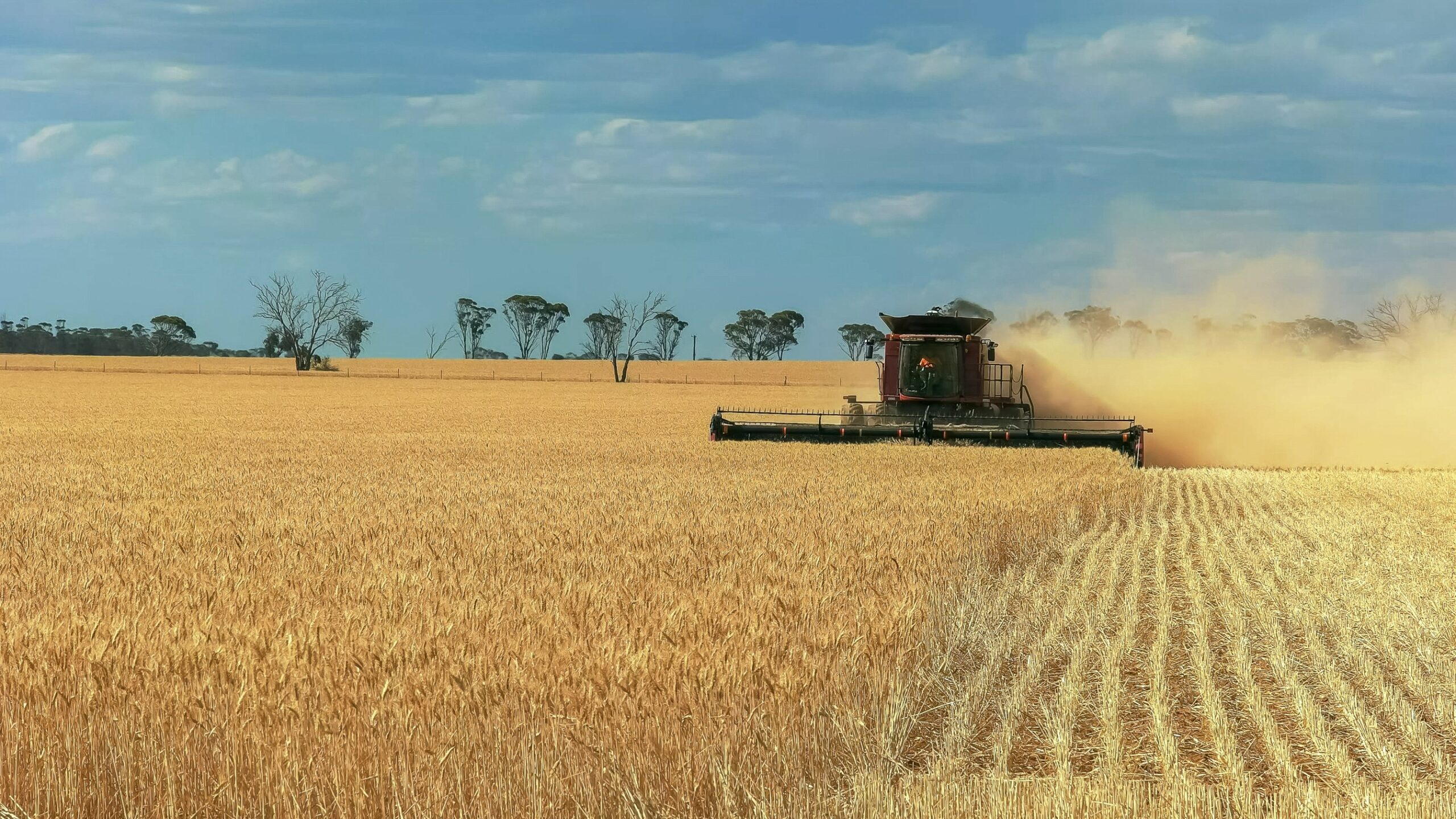About: “Myee” is the northern property in the Lake Hawdon farming enterprise headquartered in Southern Australia. Tucked away on the edge of New South Wales in the South West Slopes region near Grenfell, Myee spans approximately 2,600 hectares. With 10% of the land devoted to prime lambs, the balance focuses on producing wheat, canola, barley, and green manure crops. As the manager of the Grenfell property since 1997, Paul Tognetti took an early adopter role in leveraging big data for a more prescriptive farm management solution.
Location: Grenfell, New South Wales, Australia
Farmers Edge Technologies: Smart VR (includes on-farm weather stations, mixed-fleet telematics devices, high-frequency, high-resolution satellite imagery, access to all FarmCommand features, zone soil sampling, and unlimited Variable Rate prescriptions)
Usage Case: Improve bottom line and overall land sustainability with more efficient fertilizer use based on soil and yield data plus precise knowledge of moisture in the soil.
Duration: Six years
Challenge:
Australia presents unique climate variability challenges ranging from extended periods of drought to flooding rains, subsequently forcing growers to be resourceful and innovative.
Myee is located in a 600 mm rainfall area in NSW, although the region has also endured some fairly dry years. According to Paul, the inability to monitor and control the acidity of Myee’s soil across a variety of different soil textures (sandy loams to heavy clays) was one of the tipping points in looking for a precision ag solution. Because soil acidity occurs naturally in higher rainfall areas, it can decrease the availability of essential plant nutrients such as phosphorus and make the soil more vulnerable to erosion.
“We were blanket-applying fertilizer across the different fields but weren’t necessarily getting consistent results,” explained Paul. “We were overfeeding some areas and underfeeding others. We wanted to find a better way to use the same amount of fertilizer.”
Solution:
In 2015, Paul joined a small collective of growers in Australia that piloted the Farmers Edge FarmCommand platform.
“We started with a phased approach with just a few paddocks; when we started seeing results, we put the whole farm on the platform, adding the weather stations and all-important moisture meters.”
Paul cites improved phosphorus levels as proof that they’re applying the fertilizer where it’s needed and even using less than previous years — matching the crop inputs to the activity of the field.
“Our biggest issue in Australia is always getting the right level of moisture in the soil; so the more we can measure and proactively plan, the more precise we are in setting and achieving our production goals.”
While Paul points to improved yields as a key benefit to Farmers Edge, he is most focused on gross margins and getting the optimal balance of what he’s putting in and taking out of the soil. Earlier in his career, he calculated many of these equations by hand but didn’t have the time or ability to go back and look at a complete data picture to become more predictive.
“2018 was a drought year, and 2019 was one of the worst years anyone in this district has seen. 2020 marked one of our best years — in part due to the weather, but also to the data profiling and preventive maintenance we’ve been able to implement with Farmers Edge.”
Paul is a fan of the Farmers Edge scouting maps, noting that they provide “at-a-glance” crop inspection. The weather stations are tied to various paddocks and are helpful in proactively identifying rainfall variances across the sprawling property.
“We can monitor our fields daily, overlaying soil test data in the different zones with satellite imagery and weather information.”
Paul is very interested in collecting farm data and enjoys pulling up the maps and various system views of the farm when he has a spare moment, which is vital to analysis, planning, and decision-making for future crops. Paul is also quick to credit Farmers Edge with providing local, on-the-ground support.
“The reports are very actionable, but it’s great to have a rep in the same time zone who can answer questions or help with the modelling. They’ve also recently introduced profit maps which help us see our profits by field.”
Much of the data produced by Farmers Edge on rainfall, fuel, water usage, and fertilizer is further leveraged with an agricultural benchmarking group to which Paul belongs. The goal is for all of the growers to more accurately profile and build better predictive models for the Australian region as a whole.
“At the end of the day, it’s great to have all the data and fancy images, but what’s different from other platforms is how Farmers Edge helps us achieve a better bottom line.”
– Paul Tognetti, Myee

